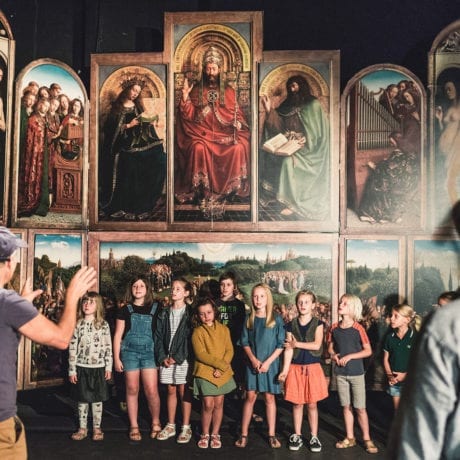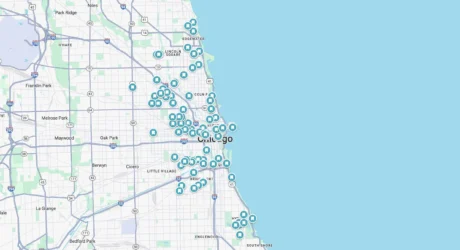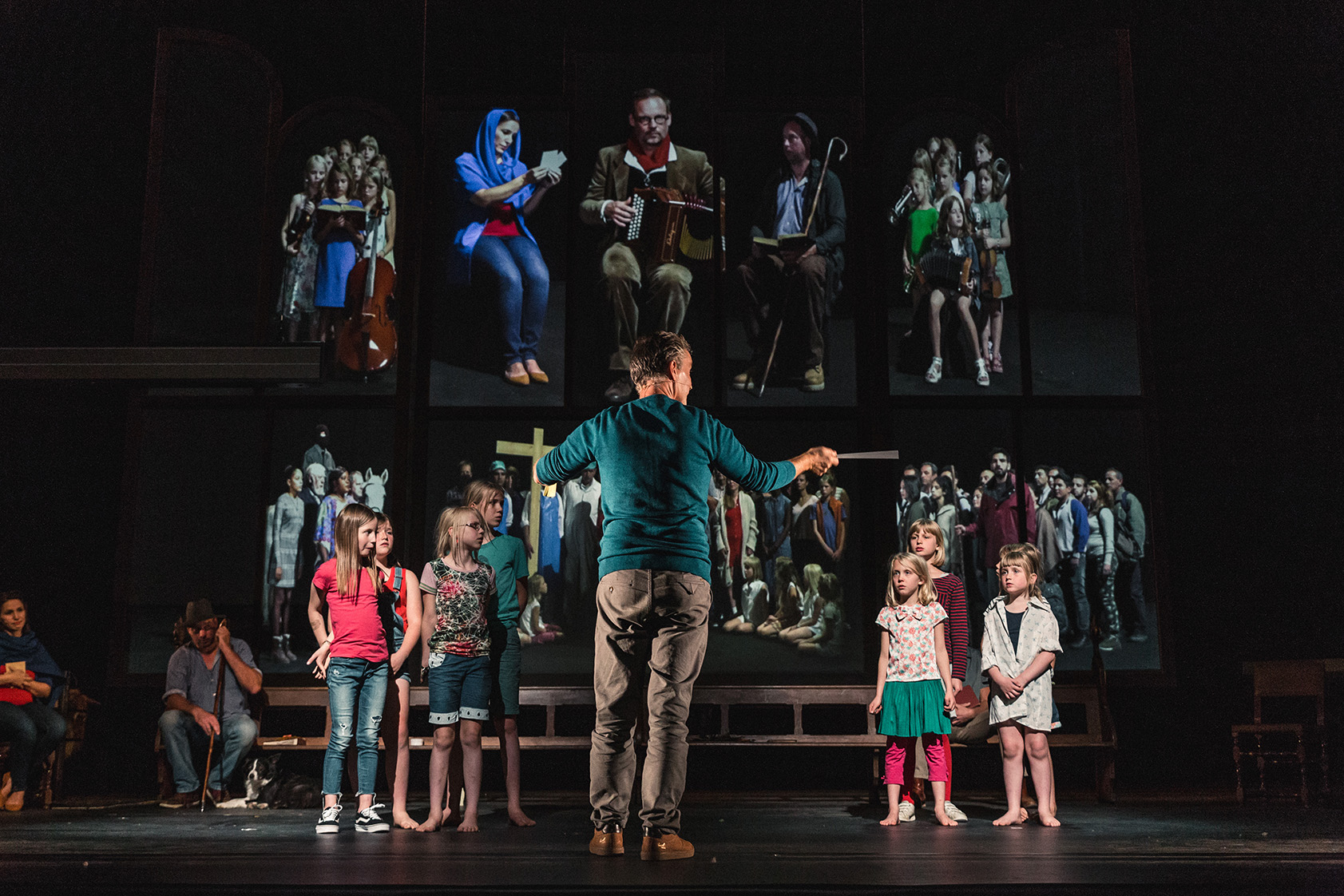
The Ghent Altarpiece stands, eleven feet high, fifteen feet wide, in the Villa Chapel at the back of the city’s cathedral. Day after day, tourists throng to St Bavo’s
to see it for themselves: ten oak panels, painted in oils almost six hundred years ago, depicting the fullness of Christian theology.
Think of it as a vast Renaissance comic strip. Each panel contains a heavenly body. A throned figure sits top centre, God the Father or Christ the Son, flanked by the Virgin Mary and John the Baptist. Choirs of angels sing to their sides, and Adam and Eve stand, naked, at either end of the arrangement. In the panorama below, crowds of judges, crusaders and pilgrims attend the Adoration of the Mystic Lamb, genuflecting as blood pours out of the sacrificial beast. It is lustrous, towering and magnificent—a monument of art history.
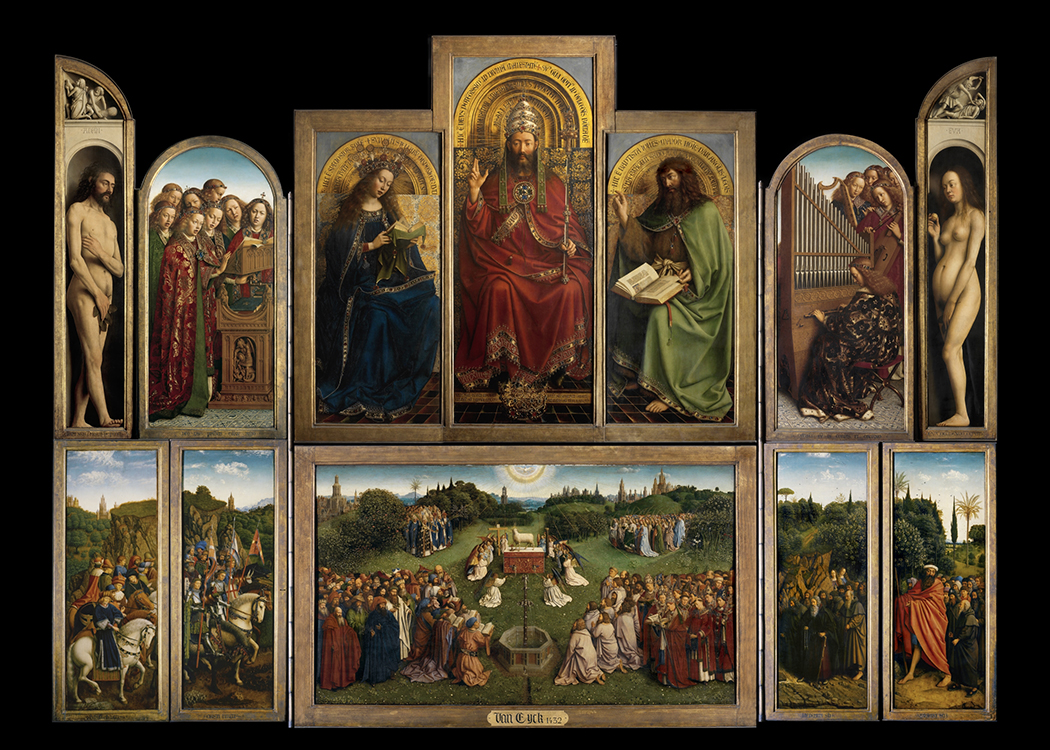
It’s also a portrait of Ghent itself. To paint each panel, the Van Eyck brothers, Hubert and Jan, employed locals as models. That fact, along with the altarpiece’s fame, gave rise to Lam Gods. To open his tenure at NTGent, just across the square from St Bavo’s, the celebrated Swiss director Milo Rau has recreated The Ghent Altarpiece on the city’s main stage, casting today’s citizens as its celestial figures. Earlier this year, adverts sought out Ghent’s Adam and Eve, its Cain and Abel and, most controversially, its crusaders. On a screen shaped like the altarpiece, videos show Ghent residents posing in their place.
Lam Gods is a generous artistic gesture: a city theatre handing its stage to its citizens. On it, an eclectic mix of people perch on a church pew: eight fidgety schoolgirls, two middle-aged actors, a family of four, religious leaders of various faiths, immigrants from Africa and the Middle East, a local shepherd and his sheepdog with their flock and more. Together, they stand for the city as a whole, in all its diversity, and their individual stories become a kind of scripture—a testament to Ghent as it is today.
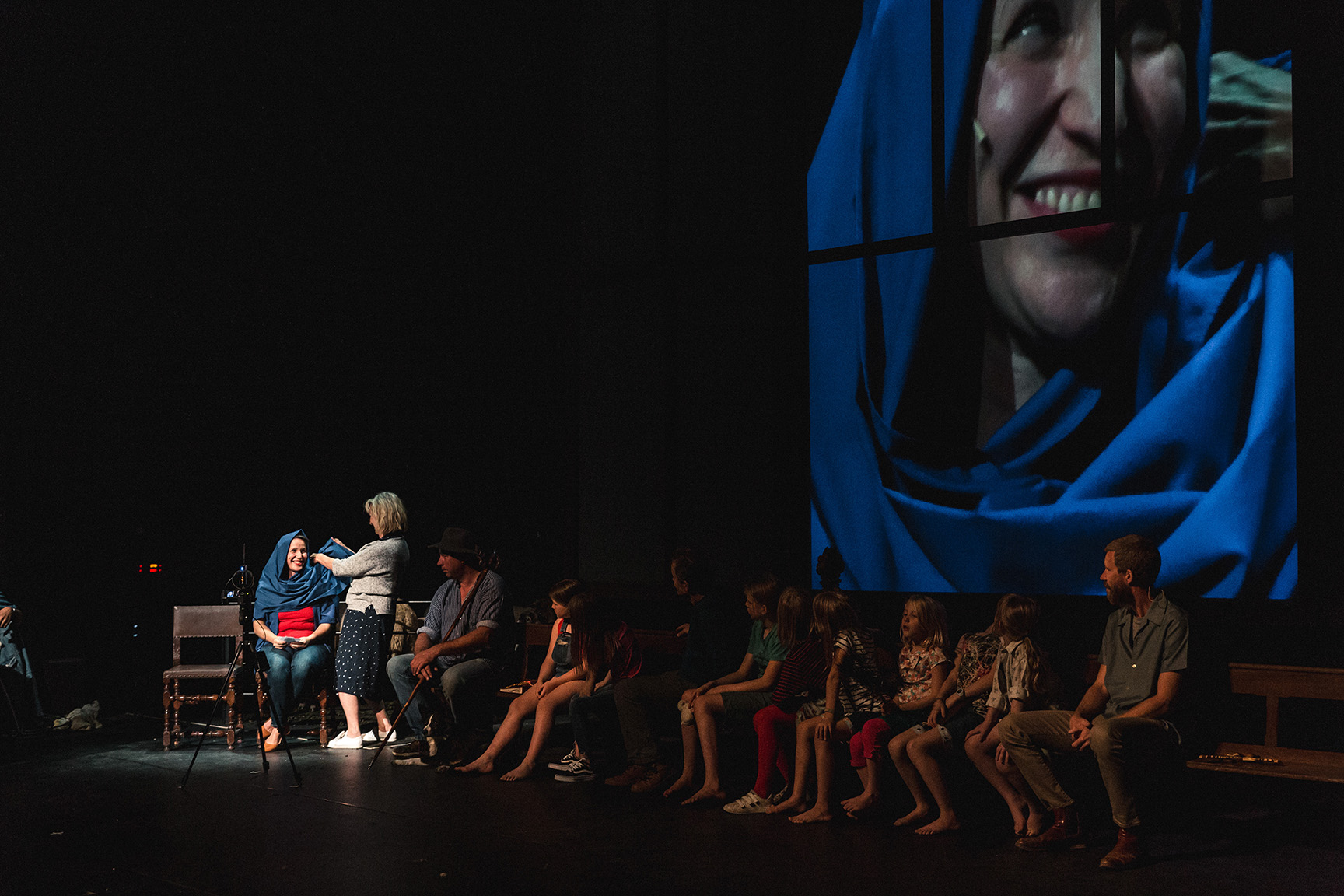
Rau’s theatre is rooted in the reality of representation—that is, the actuality involved in acting something out. He has, for instance, staged mock legal tribunals played out by legal professionals that, despite having no jurisdiction, demonstrate the possibility of justice for real. The theatrical act is somehow undeniable. It happens. It exists.
The same is true of Lam Gods. It is an event. It’s one thing for actors to play Adam and Eve, another for a real-life couple to do so. When Fanny Vandescande and Storm Calle disrobe, their comfort with one another, their genuine love, brings meaning to the first couple. She stakes her claim to play the mother of mankind on the grounds of fertility—her body rejects all forms of contraception. When they simulate sex onstage, their own children among those looking on, there’s a genuine transgression at play, not just an enacted one. Their identity informs the story being told.

Lam Gods © Michiel Devijver
That’s true of everyone and everything onstage here. When an Iraqi refugee Rames Abdullah steps up as Saint Christopher, his account of crossing the Aegan in an over-crowded boat echoes the myth of a man who bore persecuted early Christians across a river. Both men carried endangered children on their backs. It’s true of Fatima Ezzarhouni, as the Virgin Mary, recounting her son’s death in Syria fighting for Isis: the reality of her tortured grief all too hard to bear as she reads out the letter he wrote explaining his choice. On video, a returned jihadist sits on a white horse, beneath a black balaclava, and pledges allegiance to the Islamist cause. It’s a stark and chilling reminder of a contemporary crusade. “Judgement day will take place,” he ominously declares. “The battle will take years, but it will be won.”
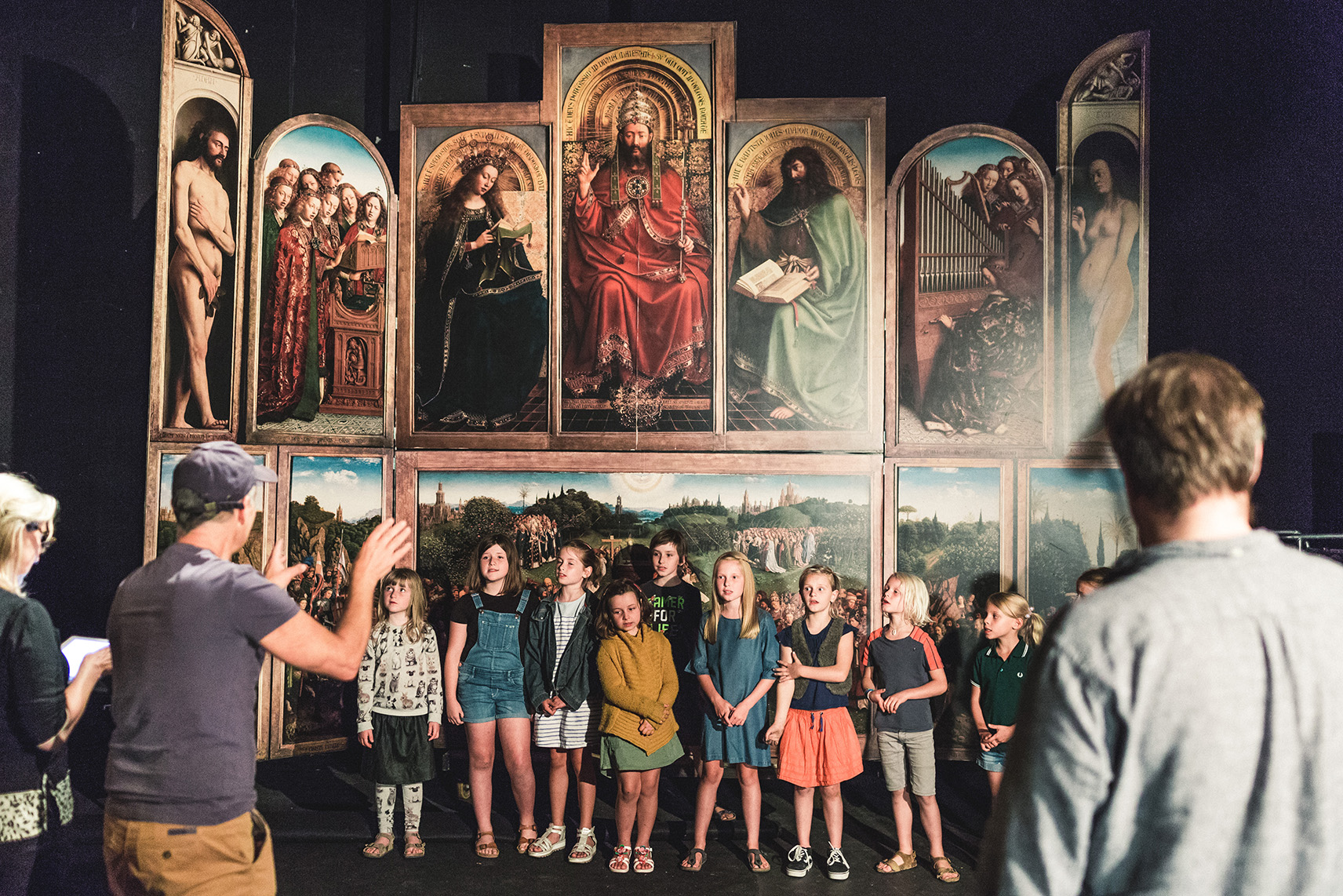
By positioning ordinary people as saints and scriptural icons, Lam Gods works in two ways at once, both restoring humanity to age-old, fossilized myths and locating their equivalents as they exist today. It seeks out the extraordinary in the world around us.
But Lam Gods isn’t simply a portrait of Ghent, it’s an attempt to sew the city—and its theatre—into the world today. The stories embodied on stage and screen create a nexus of global issues as they intersect here and now—migration, religion, globalization and more.
“Lam Gods attempts nothing less than everything”
In that, it’s a remarkable opening statement for the theatre: an introduction that tees up the programme to come. Carefully reflexive—the panel of “righteous judges” is recreated by the theatre’s own artistic team, from Rau himself to its long-serving cleaning lady—it nonetheless always looks outwards.
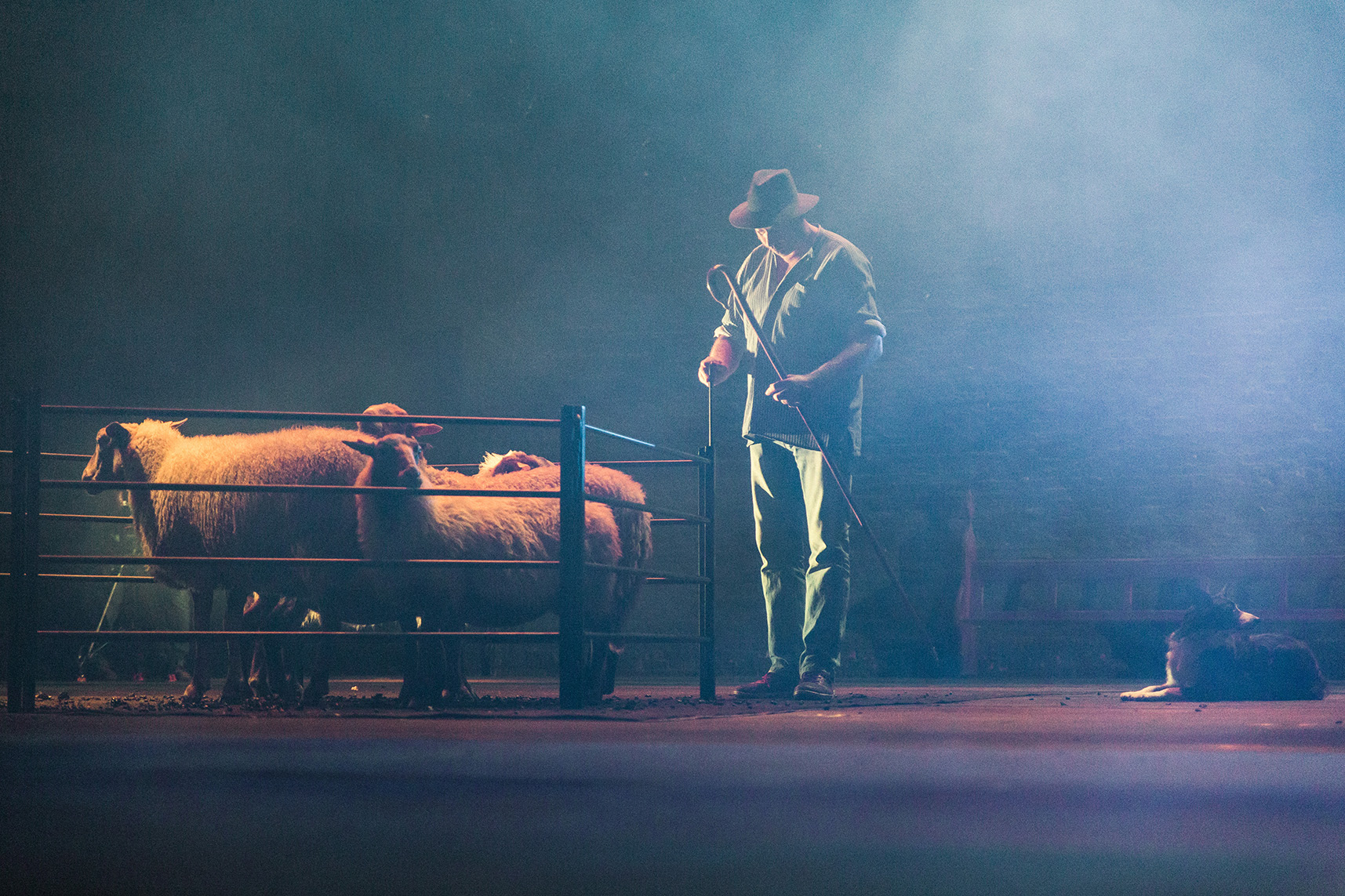
Lam Gods © Michiel Devijver
Like the altarpiece itself, Lam Gods centres on a sacrifice. Shepherd Koen Everaert shears one of his sheep live onstage, cradling it as it kicks against the razor’s buzz. Behind him, on video, footage from a slaughterhouse plays, unflinchingly, as a lamb meets its end: stunned in the head, then strung up and bled out. It’s almost impossible to watch: a graphic statement about the way that we live. The juxtaposition’s pointed: as children stroke the sheep in the room, the same animal elsewhere meets the opposite fate. We treat people similarly: caring for those close to us, neglecting those at one remove.
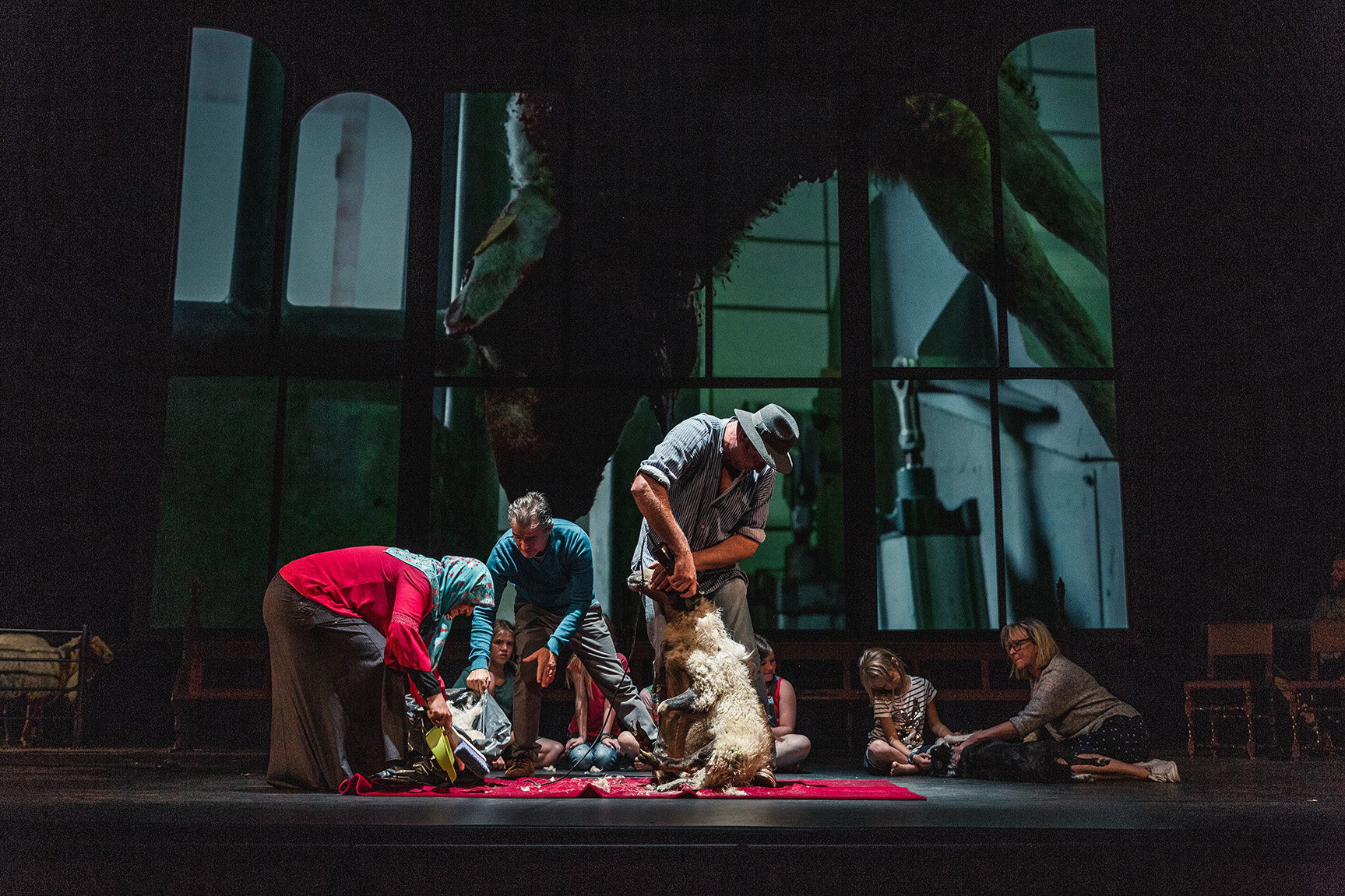
In a sense, Lam Gods attempts nothing less than everything. It starts with an image of Creation—spectral light glinting through a fog of stage smoke—and ends with a forecast of the coming climatological apocalypse. An unflinching video of a home birth is followed by a prolonged shot of a cancer patient on her death bed. Simulated sex rubs up against real slaughter; animals with humans, children with animals. In 1432, the Ghent Altarpiece encapsulated the entirety of the Christian worldview. Lam Gods does the same thing for today—always challenging the way we cling to old images and old ideas.
